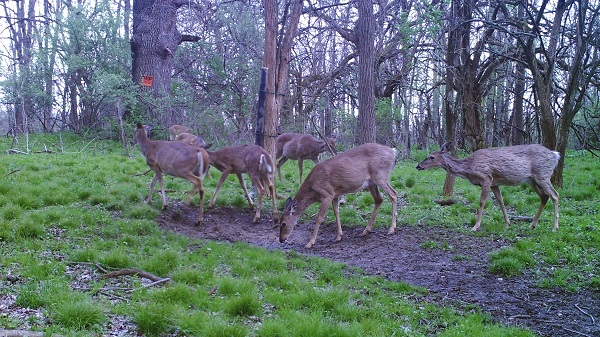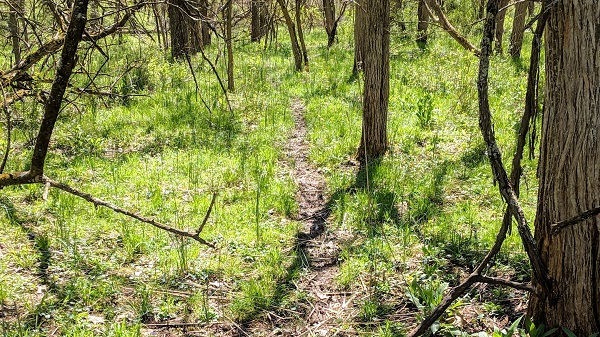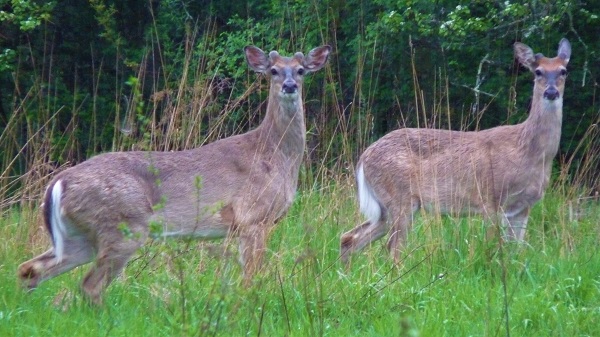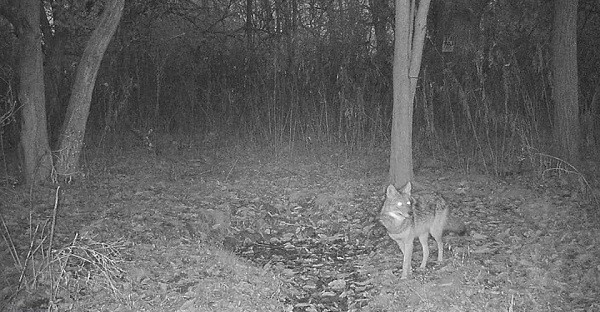5 Reasons to Mount Your Trail Cameras in the Spring
/ May 8th, 2019Trail cameras are your most valuable resource for scouting and monitoring deer activity in your hunting area year-round. If you have not already placed your trail cameras in the woods for this year, you should consider mounting them sooner, rather than later, as you may be missing out on precious information that your cameras can yield. Here are five reasons for mounting your trail cameras in the Spring:
1. You can take an inventory of the deer herd in your area.
Deer face many threats to their survival over the course of the Winter, and not all deer make it through to the end. Sometimes a harsh Winter combined with a lack of viable food options can claim several deer from the herd. Winter predation may also reduce numbers. Mounting a trail camera during the Spring will show you if the number of deer you are capturing in photos is equal to, greater, or less than the number of deer you have seen in the past. If the number is significantly less, you may want to consider passing on this area for the next year and focusing on a different location where herd numbers are equal to or greater than what you have previously observed. You can also begin to identify the general ages of the deer you are seeing, to know if there are mature bucks or does in the area that may become your chosen quarry in the Fall. Pay attention to the physical appearance of the deer, as this will show you whether the herd appears to be generally healthy or not.

Mounting trail cameras in the spring allows you to take an inventory of the herd.
2. You can identify traffic volume and patterns.
Place your cameras near well-worn trails to determine how much traffic each trail gets, whether does or bucks are utilizing the trail, and which trail on your property is the busiest. Since most trail cameras have a date/time stamp on each picture, you can also determine the specific times of day when certain trails are used the most, and the direction the deer move to and come from during those times. For example, one trail on your property may show heavy traffic in the morning, but only light or no traffic in the evening. After monitoring the area for a few weeks, you will have taken enough pictures to begin to see deer travel patterns emerge. Knowing which trails receive the most traffic and when these trails are most traveled will help you figure out where the best spot is to create a mineral lick or to place a feeder on your property during the Summer months.

Place your cameras near well-worn trails like this one.
3. You can monitor pregnancy rates and antler growth rate and size.
By observing the does that you capture on camera in the Spring, you can determine how many are pregnant, and, over time, how many fawns are born and survive into the fall, which is an indicator of overall herd health and whether predation is heavy or light in your area. Bucks, on the other hand, will begin to show the initial growth of their antlers during this time. By identifying each buck’s unique characteristics, you can follow the rate of antler growth for each one. If you are supplying minerals or a supplemental food source that is meant to promote antler growth, you can monitor the effectiveness in almost real time.

Bucks begin to display new antler growth in the spring.
4. You can determine the level of predator pressure in the area.
Your trail cameras show you the deer in the area, but they also photograph the predators that may be frequenting these trails and pressuring the deer herd. Areas where predators focus their hunting efforts can change as the concentration of available prey changes. The more predator pressure that there is in an area, the less likely the deer will use travel routes that leave them visually exposed. You will find that deer have certain trails which are heavily traveled in the Winter and Spring when there is no foliage to provide camouflage, but this travel pattern will change throughout the Summer months as foliage grows and provides cover. If these trails have foliage, the deer will continue to use them, even into the early archery season. However, once Fall arrives and the foliage disappears, the deer will oftentimes return to using the same trails post-rut that you have already identified as heavily traveled. Knowing the routes that deer are likely to take for a given portion of the season will help you to know where to plan to hunt during that time frame.

Trail cameras also show you the predators frequenting an area.
5. You can determine the best location for early season stand/blind placement.
After monitoring deer traffic patterns on your land in the Spring and Summer months, you should be able to identify the locations on your property which are the best for you to hunt in the early season. It is in these locations where you will want to place a stand or blind and focus your hunting efforts. One of the exciting parts of the beginning of archery season is the prospect that bucks are still in a daylight movement pattern and that they will continue to follow this pattern for a few weeks into the season, until their pre-rut instincts begin to develop. Your trail camera pictures now give you a photographic history which documents the time of day and location where bucks are frequenting. Go back and look at earlier sets of pictures taken a month or six weeks before your most recent pictures were taken. Are you beginning to see a pattern in the time of day and location of one buck or a set of bucks? If so, you have a more-than-likely chance that you will see this buck in the same area at the same time during the first few days of season and you should plan your opening day hunt based on this location and time of day.


